- OT
- Industry
- High Street
- “It was so important that we maintain the heritage of the practice”
“It was so important that we maintain the heritage of the practice”
OT caught up with the teams at Norville Opticians and Retail Experience Design to hear about the refurbishment of the 123-year-old Gloucester practice

06 January 2022
For the team at Norville Opticians in Gloucester, maintaining the heritage of the historic practice, which has served its community for over 120 years, was crucial in its recent refurbishment.
The practice reopened in October following an extensive refurbishment and “significant investment,” after being acquired by the Hakim Group in 2020.
The investment included an upgrade to the technology on site and a refurbishment of the interior.
Speaking to OT, Emily Lyth and Dan Zawadzki, two of the new practice owners at Norville Opticians, shared that reopening the practice had been exciting, and a “big venture” but also “a lot of hard work.”
Retaining the town’s connection to the Norville business, which was established in 1898, was a key focus through the plans for refurbishment. Lyth explained: “It was so important that we maintain the heritage of the practice and reflect that in the town, because everybody has got an association with Norville, whether it was that they worked in the factory, or their grandad worked in the factory.”
“We wanted to retain that heritage so people felt it was like a part of home and they could still come and see us,” she continued.
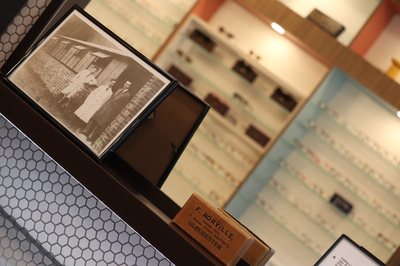
Zawadzki explained that there were a few challenges in the process: “Because of how long the building has been here, it wasn’t until we started to peel back the wallpaper that we would find a problem.”
The refit of the practice was carefully considered, “down to the desk designs, the trim, even the door handles,” he added.
The Norville practice recently merged with the Gloucester Medical Eye Centre.
This added another layer to the refurbishment considerations, as the practice had a special dispensing offering and a unique range of frames.
“Gloucester Medical Eye Centre had the kind of frames you would see on TV and think: ‘Oh my God, where did they buy those?’” Zawadzki said. “People stayed with the practice because they offered a range of eyewear that wasn’t available anywhere else and we’re adding to that.”
The practice also had a designated dispensing area – something the team has incorporated in the new layout at Norville.
Zawadzki said: “We didn’t want to just strip it out, so that was echoed in the Norville practice and now there are little side dispensing booths, which means you can be a bit more personal with the patient.”
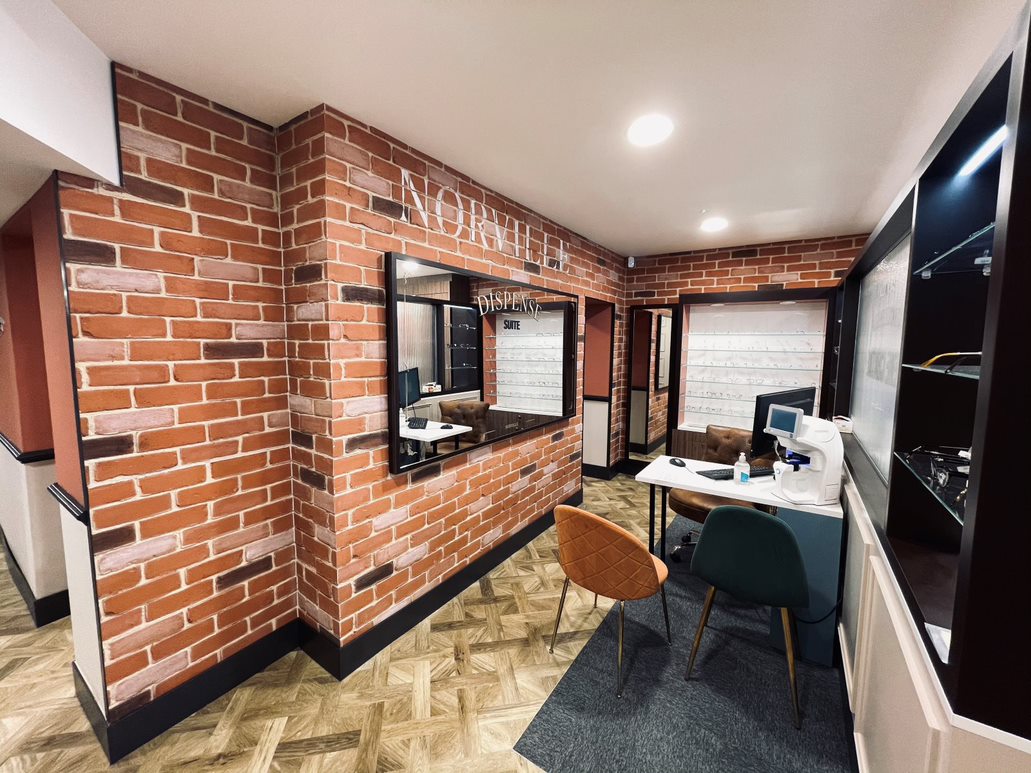
The practice has also invested in new clinical technologies, such as an Optomap device and a new OCT.
Zawadzki explained: “It’s a balance of trying to disguise the new level of technology with that heritage look,” adding that the team wanted to re-gain the feeling of “a little boutique practice with that personal touch.”
With the new equipment, Lyth said, the practice is going to be offering “a more comprehensive eye examination package going forwards.”
The team aren’t stopping there, however, and have their sights set on further changes.
“We realised that there’s some room at the back of the practice that isn’t being utilised just yet,” Zawadzki said. “We’re looking to add a fourth examination room where we can re-introduce audiology,” a service the practice had previously offered.
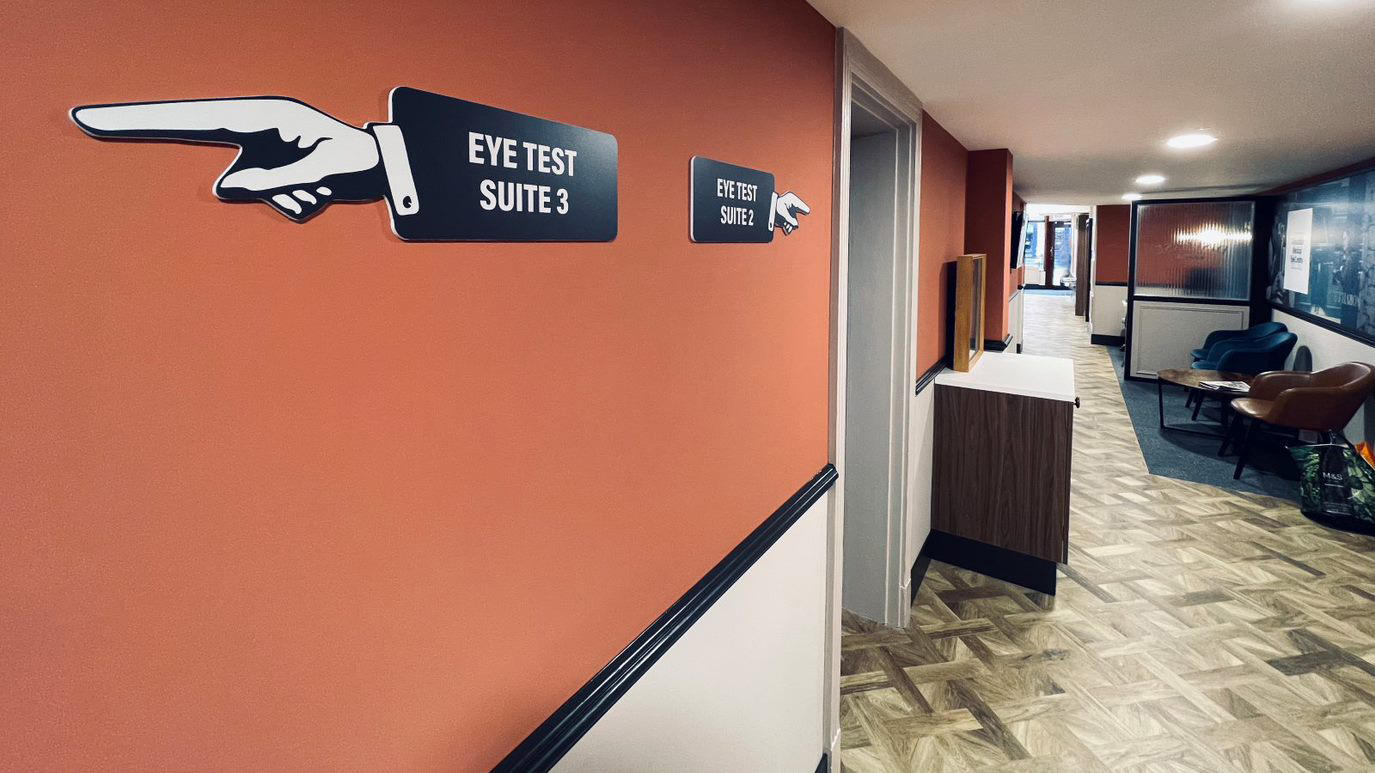
The team are looking into having a contact lens specialist run specific clinics for patients, and are also looking into myopia management to determine the best options for their patient base.
While the Norville site was closed, the teams operated out of Gloucester Medical Eye Centre.
Lyth explained: “It meant that we could still provide all our services, we could still see our patients, and we could provide contact lenses – we weren’t leaving anybody in limbo. We never stopped looking after our patients.”
After moving into the refurbished site, patients were notified, and Gloucester Medical Eye Centre patients were advised that they could move to the new practice. The team said they have found the patients to be “very loyal” and joined the new practice following the merger.
Lyth shared that the Norville practice team was involved in the refit process as much as possible, highlighting, “They are going to be working here, so it was important they all had an influence.”
“When we finally got in, it felt like; ‘this is our practice’,” she added.
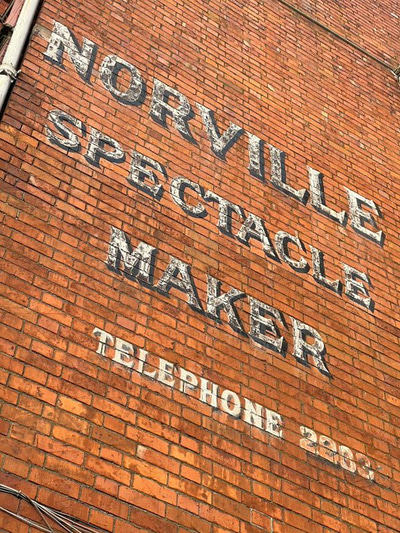
Designing a practice refurbishment
Dean Waugh, director at Retail Experience Design and lead on the Norville refurbishment, gave OT behind-the-scenes insight into the plans that went into the practice’s new look.
What can you tell us about the new design of the practice? What brief were you given?
Retail Experience Design was briefed on the complete re-design and remodelling of Norville's flagship practice in Gloucester.
The existing space was a traditional practice environment that included the hallmarks of an old-school shop fit, including extensive use of display rods, poor lighting, and standard base units.
The brief was complex and multifaceted. The key design objectives included:
- Achieving an interior design statement inspired by the Norville brand
- Elevation of the dispensing proposition to position dispensing at the heart of the customer journey
- Increased capacity for more patients and customers (without building works)
- Space for additional testing and a state-of-the-art pre-test space.
Our vision was inspired by the heritage and charm of Norville’s history and, with several protected original heritage features, we intended to always remain sympathetic to the building’s architecture and brand story. For example, the retained 19th-century wooden shopfront facia, a charming original and protected feature detailing a vintage font style script, became our influence for the design direction and key components such as graphics, signage, colours, and finishes.
How have you balanced retaining the character of the practice with modernity?
With a rich heritage dating back to the 1800s and an established, well-respected brand, Norville’s Gloucester practice provided us with a compelling design story to work with. However, our challenge wasn’t just aesthetically focused – the environment needed to deliver on retail practicality and drastically improve the effectiveness of space, whilst improving the overall patient journey.
To achieve our key priority of creating a successful practice space, we worked with key stakeholders to deliver a strategic overview of the direction of the practice and to understand the fundamentals required in the re-configured space, such as frame numbers, brands, and customer and patient journey touchpoints, as well as the business strategy.
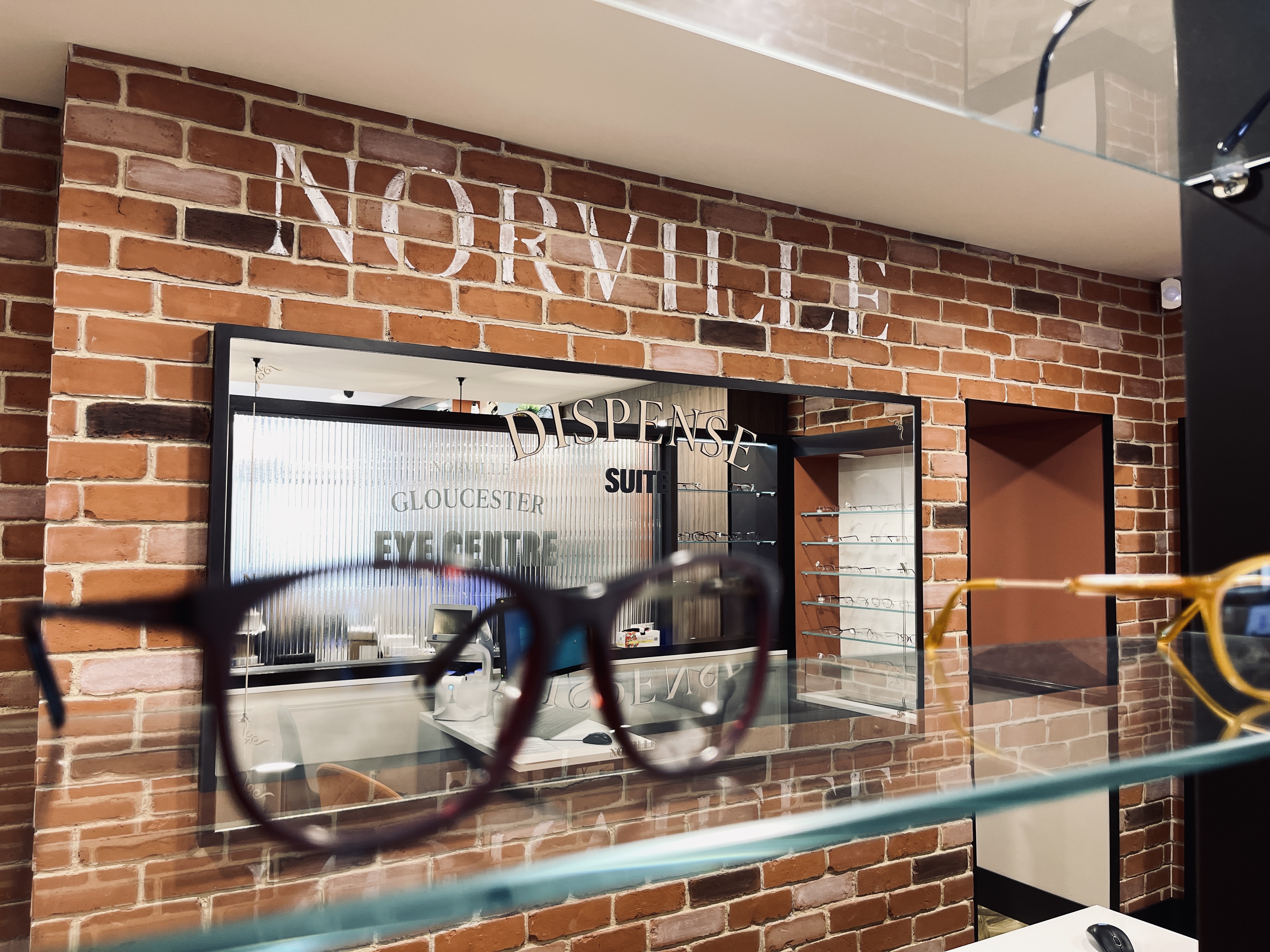
What changes has the pandemic brought about for High Street practices? How do you take this into consideration in your work?
Over recent years, High Street practices have become more informed on the significance of their physical environment and how the customer or patient experience can increase sales and loyalty. The pandemic has accelerated this, as High Street practices compete in providing existing and potential patients and customers with both a safe and enjoyable experience.
Whilst the pandemic has been a catalyst for change across the whole sphere of High Street retail and will remain a key focus in the retail design journey, the basic principles of retail design remain and become even more relevant – the strategic consideration of space management and store design to create space, influence customer flow and in-store behaviour.


Comments (0)
You must be logged in to join the discussion. Log in